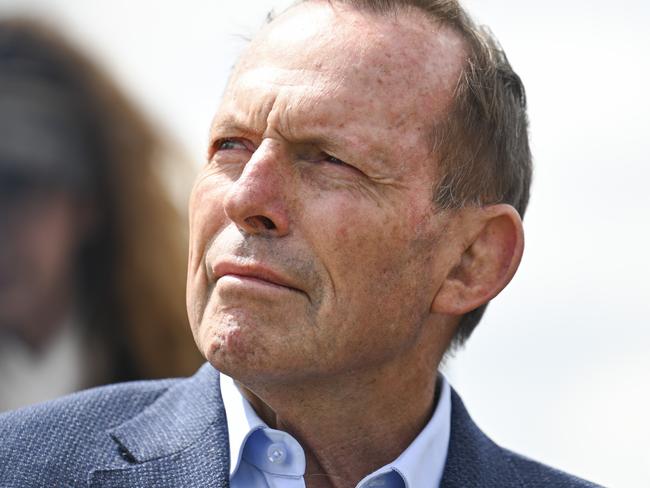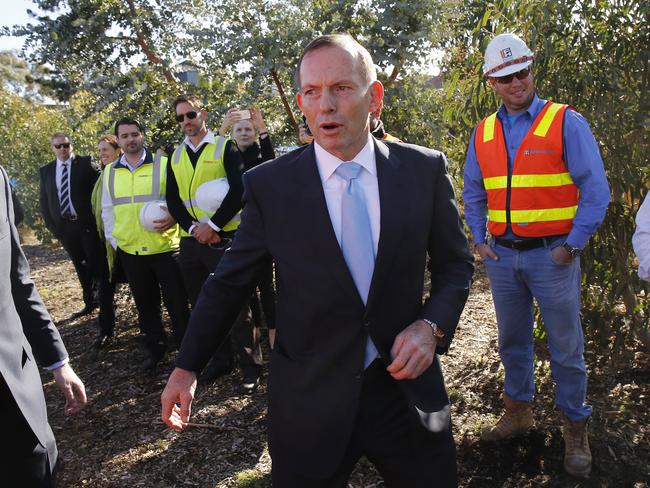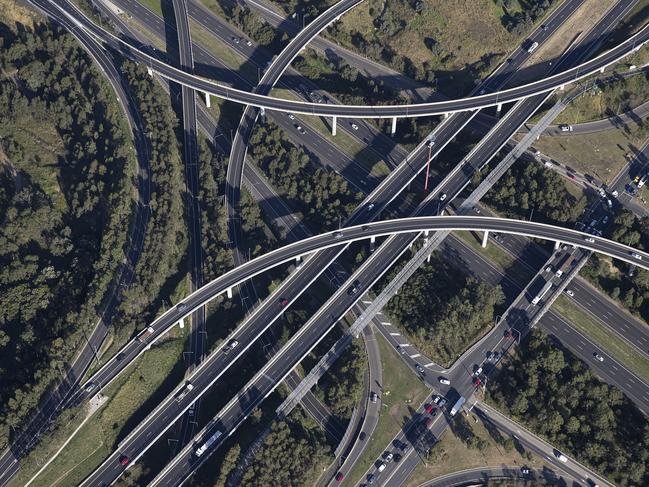Tony Abbott: Sydney must drive forward infrastructure, keep planners’ fetishes at bay
Sydney has become a more liveable city over the last decade and now the challenge is preventing doomerism from taking over and the population outrunning infrastructure, Tony Abbott writes.
Opinion
Don't miss out on the headlines from Opinion. Followed categories will be added to My News.
When I gave the first Bradfield lecture ten years back, Sydney was a city choking on its own traffic thanks to inadequate expressways that didn’t join up.
Thanks largely to the initiatives of the Abbott federal government, embraced by the O’Farrell and Baird NSW governments and enthusiastically backed by Sydney’s best newspaper, one of the world’s greatest cities now has something like a first world infrastructure.
As PM, with Treasurer Joe Hockey, I helped to unleash the biggest infrastructure drive in Australian history with a $50 billion commitment in the 2014 budget plus the Asset Re-Cycling Fund commitment to add to state infrastructure spending an amount equal to 15 per cent of the proceeds of any privatisation.
This has helped to transform the road infrastructure of all our major cities over the past decade; with the lamentable exception of Melbourne, where the Andrews government spent a billion dollars to cancel the much needed East-West link after building had actually started.
Northconnex now links the Pacific motorway at Hornsby to the M7 at Pennant Hills. Westconnex now links the motorway at Strathfield with the CBD and Sydney Airport. After five decades of procrastination, work is well underway on the Western Sydney Airport – regrettably not to be named after John Bradfield, our greatest civil engineer – plus all the associated road, rail, and commercial infrastructure.

As well, within a few years, there’ll be a motorway link from Sydney to Wollongong, easing the pressure on suburban roads around Sutherland.
It’s good that there’ll soon be a second Harbour Tunnel – unfortunately without the Beaches Link that the NSW Coalition solemnly promised to deliver at the 2019 state election, and then reneged upon; a betrayal, I’m sure, that helps to explain the success of Teal candidates in recent state and federal elections.
To its credit, though, as recently graciously acknowledged by new Premier Chris Minns, the Berejiklian and Perrottet governments did deliver the much needed new fast metro between the CBD and Sydney’s growing north-west.
As a self-described “infrastructure prime minister”, I was keen to ensure that people’s daily lives were improved by being able to move about faster in order to get things done.
No one likes being stuck in traffic that’s not moving, or crawling along at 20 or 30kmh; or waiting for buses and trains that don’t turn up, or are packed.

Better roads were my priority, because you’re king in your own car, going at your precise time to your precise destination, with the company you choose, and able to get on with your phone calls or the music or podcasts you want.
Sure, good public transport matters, but tradies can’t do their job, and parents can’t run their kids around in a train, a tram, or even a bus; although at least a bus can take advantage of the ever-improved roads that good modern living requires.
Planners, by contrast, tend to prefer trains and trams which have people travelling on someone else’s schedule between destinations someone else has chosen.
Rail systems also permit the soulless tower blocks now sprouting near train stations and tram stops.
Trams are a particular problem because of the inevitable interruption to traffic; that’s why Sydney originally scrapped them in the 1950s in favour of buses.
Of course, higher urban densities absolutely require more efficient public transport, but is more check-by-jowl living what we really want in a city always marked by its spaciousness, with parks, playing fields, an abundance of remnant bush, and beautiful waterways that aren’t overshadowed by high-rise?

Another planners’ fetish is bike lanes. As a cyclist, I’m all in favour of designated bike routes and marked lanes on the shoulders of suitable roads. But expensively separated two-way bike lanes replacing one lane on a normal road are less about safer cycling that making an ideological statement against cars. Little used bike lanes next to clogged arteries like Pitt St (and soon Castlereagh St) are now a blight on Sydney’s CBD.
On balance, Sydney has become a more liveable city over the past decade thanks in part to the interest in better planning that the Bradfield lecture has sparked. Our challenge is never again to let population out-run the infrastructure needed to cope; and not to let the current emissions doomerism detract from keeping feral animals down, our remnant bush pristine, and Sydney the world’s most stunning interaction of man and nature.





